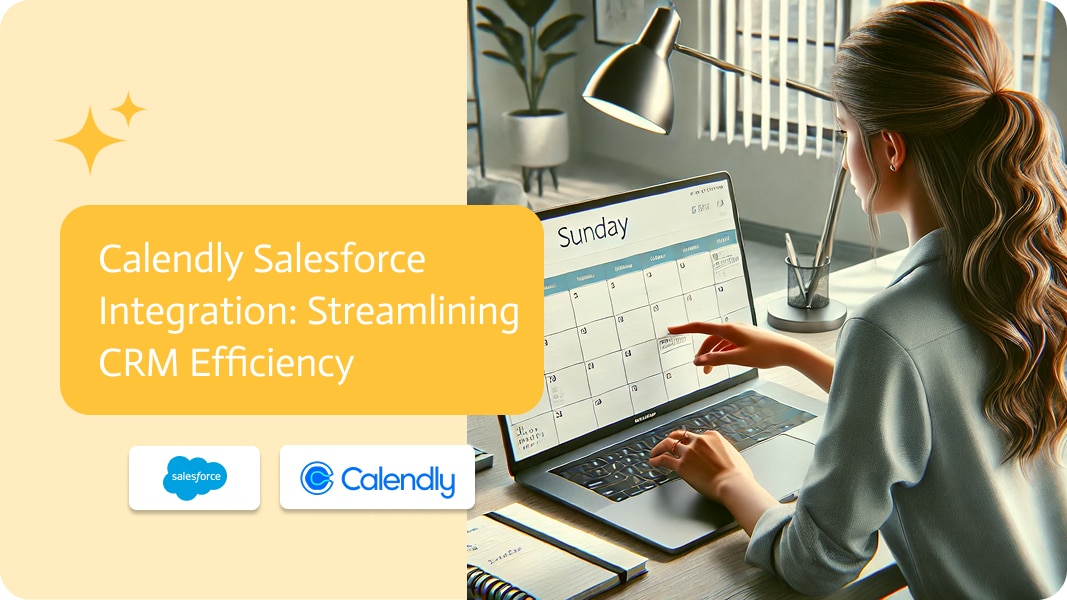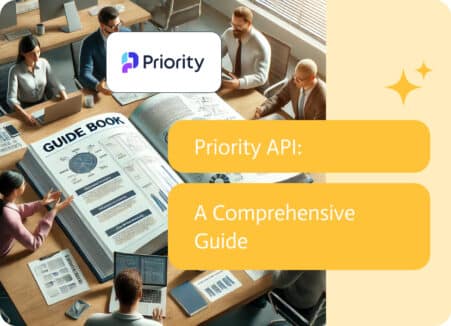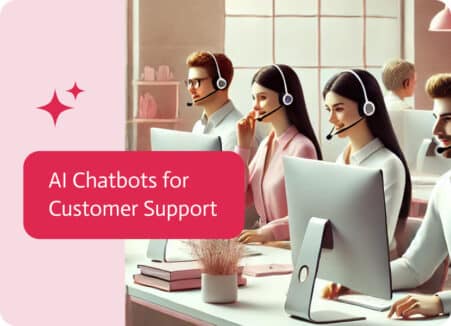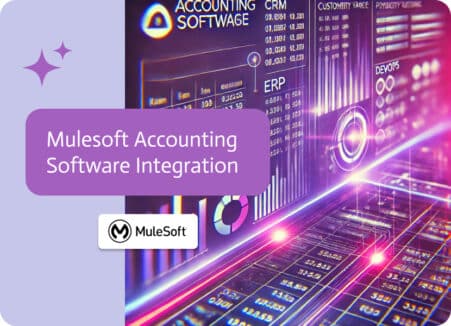

Calendly Salesforce Integration: Streamlining CRM Efficiency
The Calendly Salesforce Integration connects Calendly, a popular scheduling tool, with Salesforce, a leading customer relationship management (CRM) platform. This integration allows businesses to automate scheduling, improve data accuracy, and enhance customer engagement. Ultimately, it streamlines sales processes and optimizes operational efficiency. By synchronizing appointment data with CRM insights, organizations can make smarter, data-driven decisions. This, in turn, elevates their customer relationship management and boosts sales success.
Key features include automated logging of appointments, advanced lead routing, and deeper insights into customer behavior. These capabilities reduce the administrative burden on sales representatives. As a result, they can focus more on client interactions rather than on manual data entry. Additionally, the ability to customize workflows based on user feedback ensures that businesses can adapt the integration to meet evolving needs.
However, there are challenges. Users have reported issues with synchronization errors, data discrepancies, and the need for ongoing data privacy and security measures. Regular maintenance and training are essential to ensure the integration functions optimally. As businesses increasingly depend on efficient scheduling and CRM systems to stay competitive, the Calendly Salesforce Integration has become a vital tool for enhancing customer engagement and refining sales strategies.
Key Benefits of Calendly Salesforce Integration
1. Streamlined Scheduling and Data Management
One major benefit of the integration is automatic appointment logging and meeting data updates in Salesforce. This reduces the need for manual data entry and minimizes errors. As a result, all team members can access the most up-to-date information, which improves overall data accuracy.
Sales representatives no longer need to spend time manually updating Salesforce with meeting details. The integration handles this process automatically, allowing teams to focus on client interactions. With a centralized scheduling system, businesses can efficiently allocate time to sales activities, minimizing administrative tasks.
2. Enhanced Customer Insights
Another key advantage is the ability to track appointment data alongside customer details. This provides valuable insights into customer behavior and preferences. Consequently, sales teams can make more informed decisions, improving customer engagement.
By analyzing combined data from both platforms, businesses can tailor their strategies to better serve clients. This leads to more successful interactions, stronger relationships, and ultimately better sales outcomes.
3. Improved Lead Management
Calendly’s advanced lead routing ensures that high-value leads are promptly assigned to the right sales representatives. This quick action improves the chances of closing deals and enhances the overall customer experience.
Seamless data synchronization means that every scheduled meeting and client detail is updated in real-time. This allows sales teams to track leads more effectively, ensuring no opportunities are missed. The improved visibility helps sales representatives prioritize their outreach.
4. Continuous Improvement and Customization
Calendly’s integration with Salesforce is highly customizable. Businesses can modify workflows and processes based on user feedback and changing operational needs. For example, teams can adjust booking pages or create specific workflows to match their sales process.
By continuously iterating based on user experiences, organizations can ensure the integration evolves to meet their unique requirements. This flexibility is crucial for businesses looking to optimize their CRM practices over time.
iPaaS Integration Process: A Streamlined Approach
For larger organizations seeking to integrate Calendly and Salesforce, Integration Platform as a Service (iPaaS) is the preferred method. iPaaS platforms, like Noca AI, offer a scalable, customizable, and automated approach that simplifies the integration process. These platforms handle complex workflows and make it easier to connect systems without the need for manual coding or technical intervention.
Why iPaaS is the Best Choice for Larger Organizations
While manual integration or built-in connectors may work for smaller businesses, iPaaS platforms provide a more robust and scalable solution, particularly for large enterprises with multiple departments and sophisticated workflows. With solutions like Noca AI, businesses can seamlessly integrate Calendly, Salesforce, and other applications. iPaaS platforms enable companies to create complex automation rules and customize workflows, reducing the need for constant manual oversight.
iPaaS Integration Process: A Step-by-Step Guide
- Access to iPaaS Platform: Start by gaining access to an iPaaS solution which will serve as your central integration hub.
- Connect Calendly and Salesforce: From the iPaaS dashboard, select Calendly and Salesforce as the systems you want to integrate. The platform will guide you through the authentication process.
- Configure Data Flows and Automation: With iPaaS, you can set up advanced automation workflows. For example, you can map data flows between Calendly and Salesforce, specifying actions such as creating leads, logging meetings, or updating opportunities based on scheduled events.
- Test the Integration: After configuring workflows, the iPaaS platform will allow you to test the integration. This step ensures that data syncs correctly and that automation rules are working as expected.
- Monitor and Scale: iPaaS platforms also provide monitoring tools to track integration performance. As your organization grows, these platforms allow you to adjust workflows or scale the system to meet new demands. iPaaS solutions make it easy to expand integrations or modify workflows as your business evolves.
Benefits of Using iPaaS for Calendly Salesforce Integration
- Scalability: iPaaS solutions are designed to handle large amounts of data and complex workflows, making them ideal for larger organizations.
- Automation: Advanced automation capabilities reduce the need for manual processes, allowing teams to focus on high-priority tasks.
- Customization: iPaaS platforms let businesses customize workflows to suit their specific operational needs.
- Real-Time Synchronization: iPaaS ensures that data between Calendly and Salesforce syncs in real-time, keeping your CRM updated with the latest meeting information.
- Flexibility: iPaaS platforms allow organizations to integrate additional tools and applications or modify workflows as needed.
By incorporating iPaaS into their integration strategy, larger organizations can unlock the full potential of their Salesforce integration. This approach ensures a more efficient, scalable, and automated system that aligns with business goals.
Best Practices for Calendly Salesforce Integration
To get the most out of your Calendly Salesforce integration, it’s important to follow these best practices:
- Regularly Clean Data: Schedule routine data audits to maintain data accuracy in your CRM.
- Provide Team Training: Ensure that all team members understand how to use the integration effectively. Focus on the time-saving benefits and automation features.
- Monitor Performance: Continuously track the integration’s performance and address any issues that arise.
- Prioritize Security: Implement strong security measures, such as data encryption and access controls, to protect sensitive information.
Conclusion: Maximizing the Power of Calendly Salesforce Integration
The Calendly Salesforce Integration is a crucial tool for businesses that want to streamline their scheduling processes, improve data accuracy, and enhance customer engagement. By leveraging this integration, companies can optimize their sales operations, make data-driven decisions, and achieve better business outcomes. For larger organizations, an iPaaS platform like Noca AI provides scalability, automation, and flexibility, ensuring long-term success. Despite a few challenges, such as synchronization errors or data discrepancies, proper maintenance and team training can ensure that businesses reap the full benefits of this integration.
Q&A: Calendly Salesforce Integration
- What is the Calendly Salesforce Integration?
It’s a seamless connection between Calendly, a scheduling tool, and Salesforce, a CRM platform. The integration automates scheduling and syncs meeting data to Salesforce for better sales and CRM management. - What are the main benefits of this integration?
Key benefits include enhanced data accuracy, streamlined scheduling, advanced lead routing, and improved customer insights. - How does the integration improve lead management?
Calendly’s advanced lead routing automatically assigns leads to the appropriate sales representatives, ensuring prompt follow-ups. - What are the common challenges of using this integration?
Some challenges include synchronization errors, data discrepancies, and the need for regular system maintenance and data security measures. - Why should large organizations use iPaaS for this integration?
iPaaS platforms offer scalability, advanced automation, and the ability to handle complex workflows, making them ideal for larger organizations with sophisticated integration needs.


